Minds On
Balance and movement
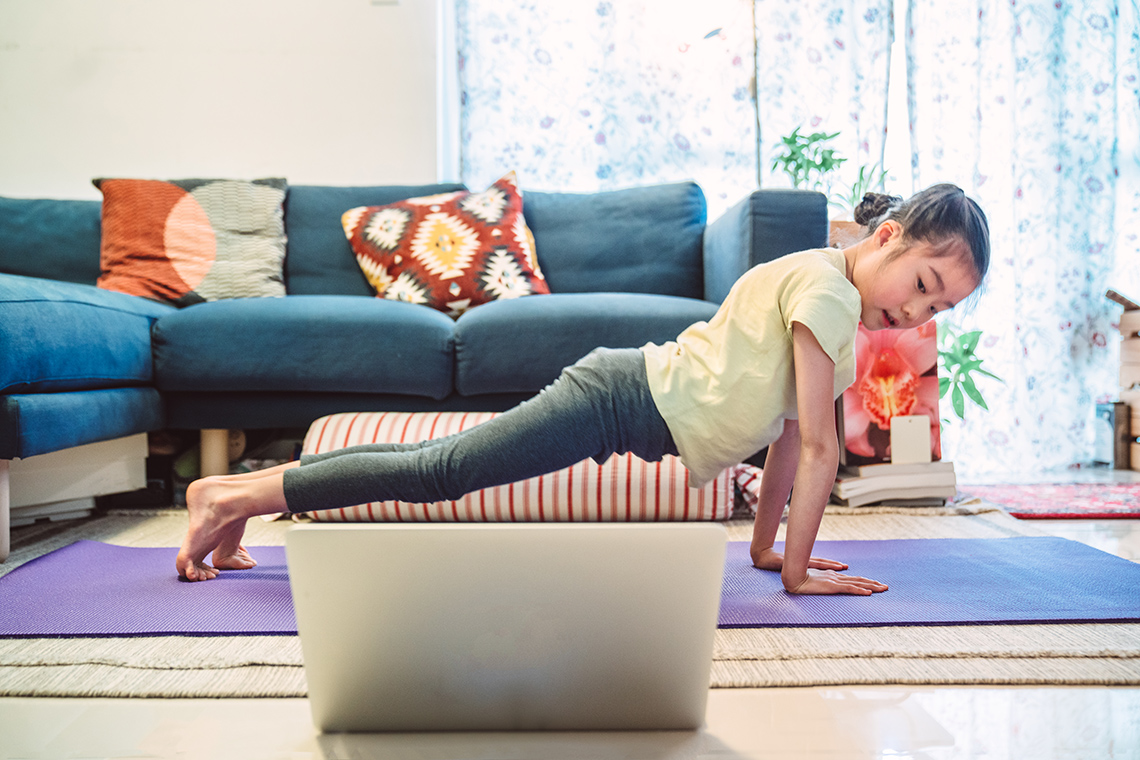
People use various balance and movement activities for many different reasons.
Explore this video entitled "Power Up: Nature 3" and think about the different types of movements demonstrated.
Thinking about movement
- What types of movements did you view in the video?
- How did the instructor change the various movements?
- How did the instructor describe or model the movements to help you complete them successfully?
- What does the instructor tell the viewer to do before she leaves? Why do you think this is important?
- How were the participants feeling at the end of the session?
Action
Roll the dice

In this activity, you will be rolling dice to pick a movement to perform.
If possible, you should have the following items before you begin:
- dice or paper
- chair (optional)
Materials Needed
Alternative materials
If you don’t have dice, get a piece of paper and cut out six squares. Write the numbers one to six on the paper. Put the paper in a bowl. Rather than roll the dice, shake the bowl, and then reach in to pull out a number.
Safety
Before you begin, consider these safety precautions:
Warm Up
Warm up
Your body needs to be warmed up before you exercise. You can do this by completing the following stretches and light aerobic exercises, which will help you better perform a movement/activity while also greatly reducing your chance of injury.
Always warm up before doing any physical activity!
Press the following tabs to access a few examples of warm-up activities that you can try.

If you can, let’s stretch our necks! This stretch can be performed standing up or in a seated position. Keep your shoulders relaxed as you begin with your head facing forwards. Gently and slowly tilt your head to the right. Hold here for five seconds. Begin rolling your head slowly, keeping your chin tucked and head down, to the opposite side. Hold for five seconds. Roll your neck back to the middle, then bring your head up to the starting position. Repeat 3-5 times.

If you can, let’s warm up our shoulders! Either standing or in a seated position, raise and extend your arms to the sides without bending the elbows. If you are standing, have your feet shoulder-width apart. Keep your thumbs pointing in front of you. Begin slowly rotating your arms forward, making small circles. Go forward for 20-30 seconds, then backwards for the same amount of time.

If possible, stand tall and shift your weight to your right leg. Lift your left foot back and hold it with your left hand. Pull the left foot towards your butt and feel the stretch. Hold the stretch for 20 seconds and repeat with the right leg. Repeat the stretch five times for each leg.

Stand or sit upright with your hands to your sides and lift one leg slightly up to make small circles with your ankles. Do this 10 times in each direction and repeat with your other foot.

Stand or sit upright with your hands in front of your chest. Hold one wrist with the other hand and make small circles with the wrist that is being held. Complete this 10 times in each direction and repeat with your other hand.

Begin in a standing position with your legs together and your arms at your sides. Stretch your arms above your head and jump slightly so that your feet are spread wider than shoulder-length. Repeat this movement 10 times.
Roll with Fitness cards

For this activity, you can choose a Roll with Fitness card from the options below. Each of the three cards include six movements on them. Each card will focus on either locomotor, non-locomotor, or creative movements.
Review all six movements on a card to make sure you know how to do them. If the move is too difficult, think about how you can modify it.
Press 'Modification Tip' for an example of how you could change a move to be easier to complete.
You might sit in a chair to do the move or hold on to a countertop to help with your balance.
Card 1: Locomotor movements
Press the following tabs to explore the movements on Card 1. Each tab represents the number on the dice, followed by the movement to be performed.
To jump, begin by bending your knees and hips. Keep your feet close together. Keep your arms straight and by your side. As you begin to jump, press your feet into the ground and take off with both feet at the same time. As you do this, thrust your arms up. As you land, make sure you land on the balls of your feet.
Check out the following video to learn more about how to jump.
Bring one knee up high and then take a step forward. As you do, bring your arm on the opposite side forward and the other back. Now, Bring the other knee up high and step forward again. Repeat what you did with your arms. Continue this motion.
Access the following video to learn more about how to march.
Begin with your feet close together. Choose your left or right leg as your hopping foot. This is the foot that will hit the ground. Lift the opposite foot up so that your knee is bent to 90 degrees. With this leg up, swing your arms, jump up. Try to land on the ball of your foot.
Explore the following video to learn more about how to hop.
Skipping is like hopping except you move forward when you jump and then rather than jumping up and down on the same leg, you repeat the hop with the opposite leg. Remember to jump just a little bit up and a little bit forward. The motion should be smooth from one leg to the other.
Access the following video to learn more about skipping.
Face forward with your legs together. Lift your right foot and take a step to the side. After stepping with this foot, bring the other foot beside it. Continue this motion in the opposite direction and repeat.
You may also complete this movement by striding diagonally to the right, then move the left foot beside the right. Move your left leg then your right leg back to where you started. Repeat moving to the left.
Check out the following video to learn more about how to slide.
Take a step forward on one foot. As this foot is firmly on the ground, follow it with a step forward on the other foot. Keep moving forward using this motion. Be sure to move your arms with the motion to help keep your balance.
Striding can be accomplished by performing any movement which allows a person to move smoothly through an area.
Explore the following video to learn more about striding.
Card 2: Non-locomotor movements
Press the following tabs to explore the movements on Card 2. Each tab represents the number on the dice, followed by the movement to be performed.
Begin seated. Choose one foot, point your toes to the floor, and turn your knee to the side. Now, try raising your hands above your head. For an extra challenge, try closing your eyes!
Explore the following video to learn more about how to perform a seated tree pose.
Begin seated on the floor. Bring the bottom of both feet together. With the help of your arms, drive your knees down and into the ground. Hold the stretch for 20 to 30 seconds. When ready, slowly release your legs.
Access the following video to learn more about performing a butterfly stretch.
Stand with your feet hip-width apart. If you need to, hold onto a wall for balance. Keep one leg planted into the grounded. Then swing the opposite leg forward and backward in a single movement. Switch sides and repeat.
For arm swings, you may sit or stand to find your balance. Keep your body stationary and then swing your arm forward and back in a single smooth movement.
Explore the following video to learn more about this stretch.
With your legs back and abs tight, place your hands below the shoulders, slightly wider than shoulder-width apart. Bend your elbows and lower your chest until it’s just above the floor. Push back up to the starting position. Repeat. You can also perform this movement on your knees instead of on your toes.
Check out the following video to learn more about push-ups.
Sit down with your knees bent. Extend your arms out to the sides and lift your feet off the floor. Keep your chest open. Twist your chest to the right, and then reverse, twisting to other side. Repeat. You can also leave your legs flat on the ground and only focus on twisting the upper body.
Access the following video to learn more about doing a boat twist.
Lie face down, with your legs back and your hands palm down beside your chest. Lift your torso up and push down through your hands. Use your back muscles and you bend your upper body back. Hold then return to the starting position.
Explore the following video to learn more about performing a backbend.
Card 3: Creative movements
Press the following tabs to explore the movements on Card 3. Each tab represents the number on the dice, followed by the movement to be performed.
Stand with your feet shoulder-width apart, then raise your arms straight out to the sides. Bend and rotate your torso to the right, touching your right feet with your left hand. Return to the starting position and repeat on the other side. You may also perform this movement in a seated position.
Check out the following video to learn more about performing a bent over twist.
Begin with your feet in a wide stance. Your toes should be turned out at an angle. Keeping both hands clasped in front of you, jump up, land on your toes, and squat. Jump up again and return to the starting position.
Access the following video to learn more about performing a jump squat.
Stand with your feet shoulder-width apart. Rotate your chest up to the right and raise both your hands until there are over the same shoulder. Squat and rotate your torso down and to the left. Your arms will come diagonally across the body, down past your left hip. Repeat on the other side.
Explore the following video to learn more about performing a wood chop movement.
Stand with your hands by your sides and your feet hip-width apart. Jump with both feet to the right and then to the left. Change the speed to make this movement more challenging.
Check out the following video to learn more about performing a side-to-side hop.
Stand with your feet hip-width apart. Your arms should be out in front of you. Lunge with your right leg and rotate your torso to the right. Extend your arms out and facing in the same direction. You may also clasp your hands together as you twist. Return to the starting position and repeat the movement on the left side.
Explore the following video to learn more about performing a lunge twist.
With your legs back and abs tight, place your hands below the shoulders, slightly wider than shoulder-width apart. Bend your elbows and lower your chest until it’s just above the floor. Push back up to the starting position. Twist your torso and lift your left hand toward the ceiling. Bring your left hand back then repeat.
Check out the following video to learn more about performing a push-up rotation.
Get rolling
In this version of the game, you will roll the dice five times. Each time you roll the dice, refer to the card you selected. You will complete the move that corresponds to your roll 10 times. If the move uses one leg or arm at a time, complete each move 10 times for each limb. If you roll the same number more than once, you can choose to roll again or do the same move again.
Modifying the activity
There are several Roll with Fitness cards. Choose another card and repeat the activity.
Add more rolls to your game to increase your fitness, skill, and strength.
Questions
- What differences did you notice between the Roll with Fitness cards? How did they affect your workout?
- Was there a card you found especially enjoyable? Which one would you want to continue to practise?
Cool Down
Slow locomotion cool down
Remember to perform your safety check before you begin!
We’re now going to cool down with slow locomotor movements.
Remember to take slow and deep breaths as you allow the heart rate to return to a normal pace.
- Choose a locomotor movement that you enjoy. It can be walking, jogging, shuffling, skipping, or any other locomotor movement of your choice.
- Now, move slowly around a clear space while repeating one of the following movements for 1 minute:
| A) Touch shoulders with hands, then reach arms over your head. Repeat. |
| B) Wave arms from side to side and forward like a tree. |
| C) Raise knees slightly, then take giant steps in slow motion. |
Consolidation
The spice of life

Variety is important when you do movement activities. It’s easy to get stuck doing the same few exercises. Games like the dice game we just played encourage us to do a variety of movements.
Fitness Fan activity
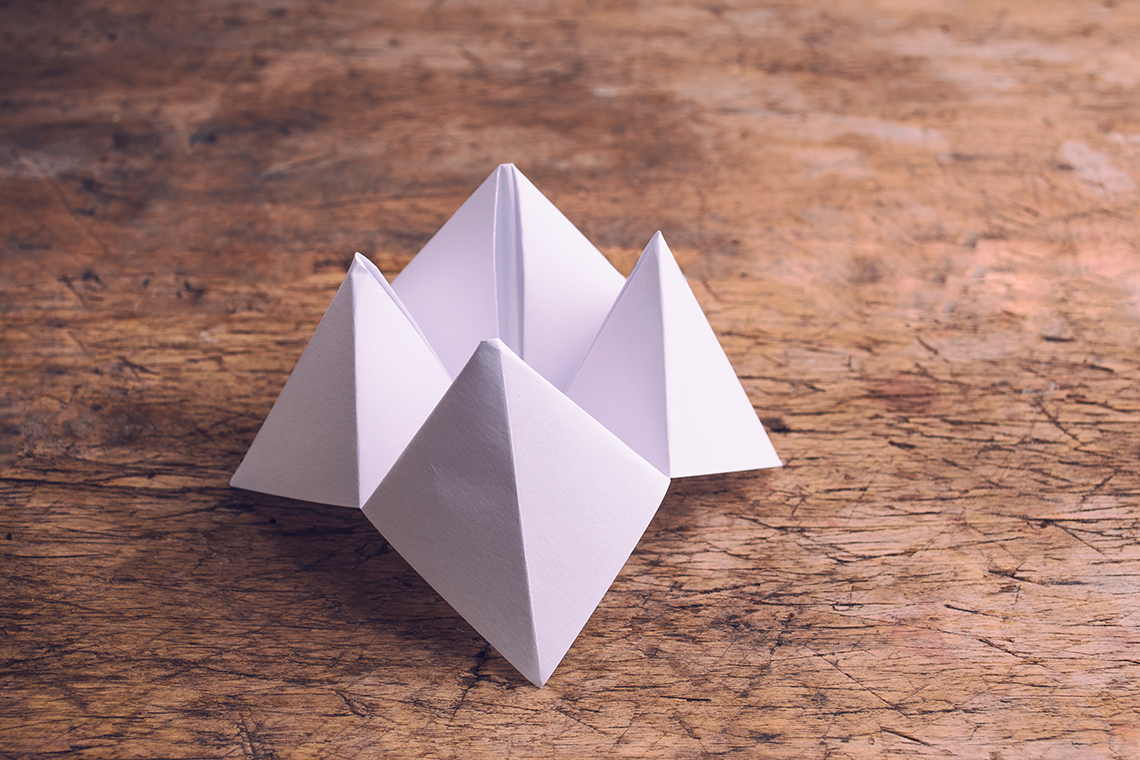
In the next activity, you will create a similar game that incorporates different movements as well as different pathways, levels, and speeds.
Rather than roll the dice, you will create a paper cootie catcher or fortune teller. We’ll call it a Fitness Fan! The Fitness Fan will help mix up the movements.
Press the following tabs to access instructions on how to make your Fitness Fan.
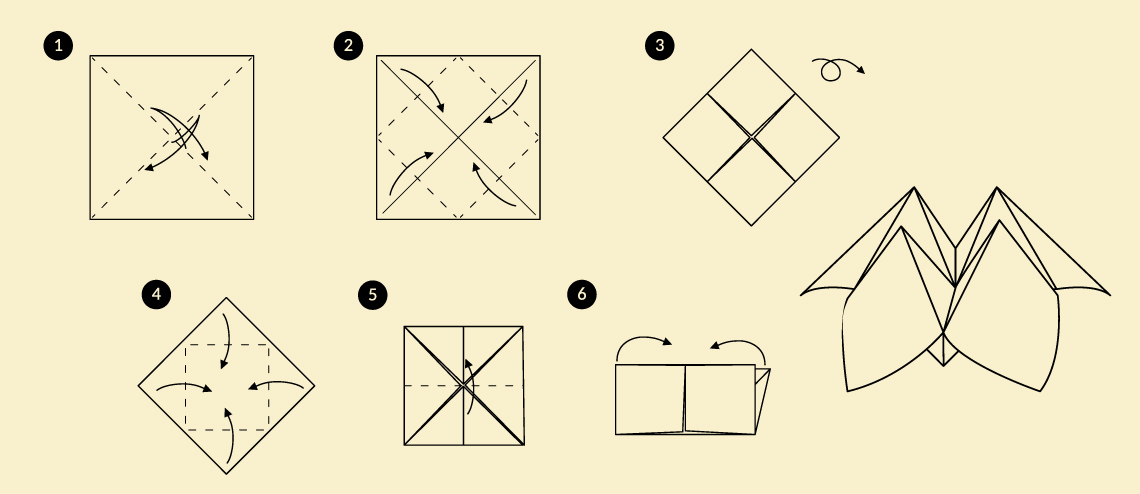
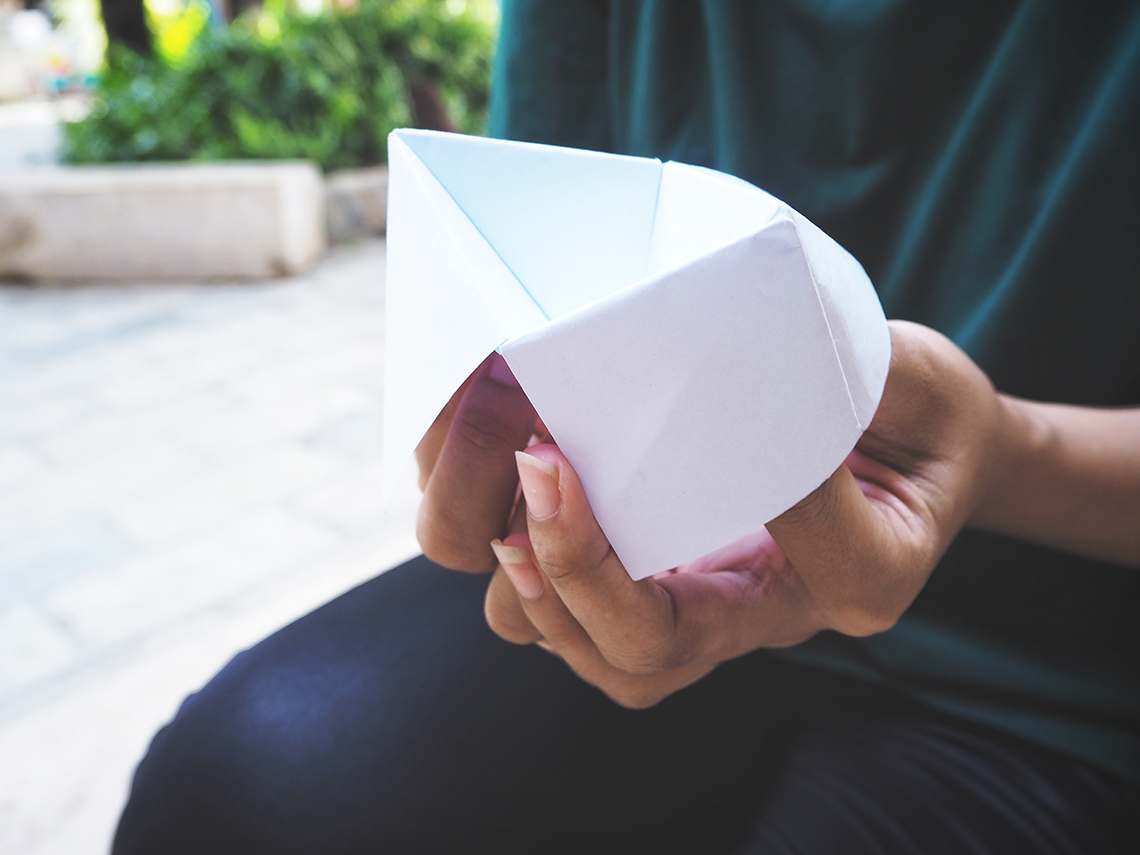
On the four outside diamonds, make a circle and colour each one a different colour.

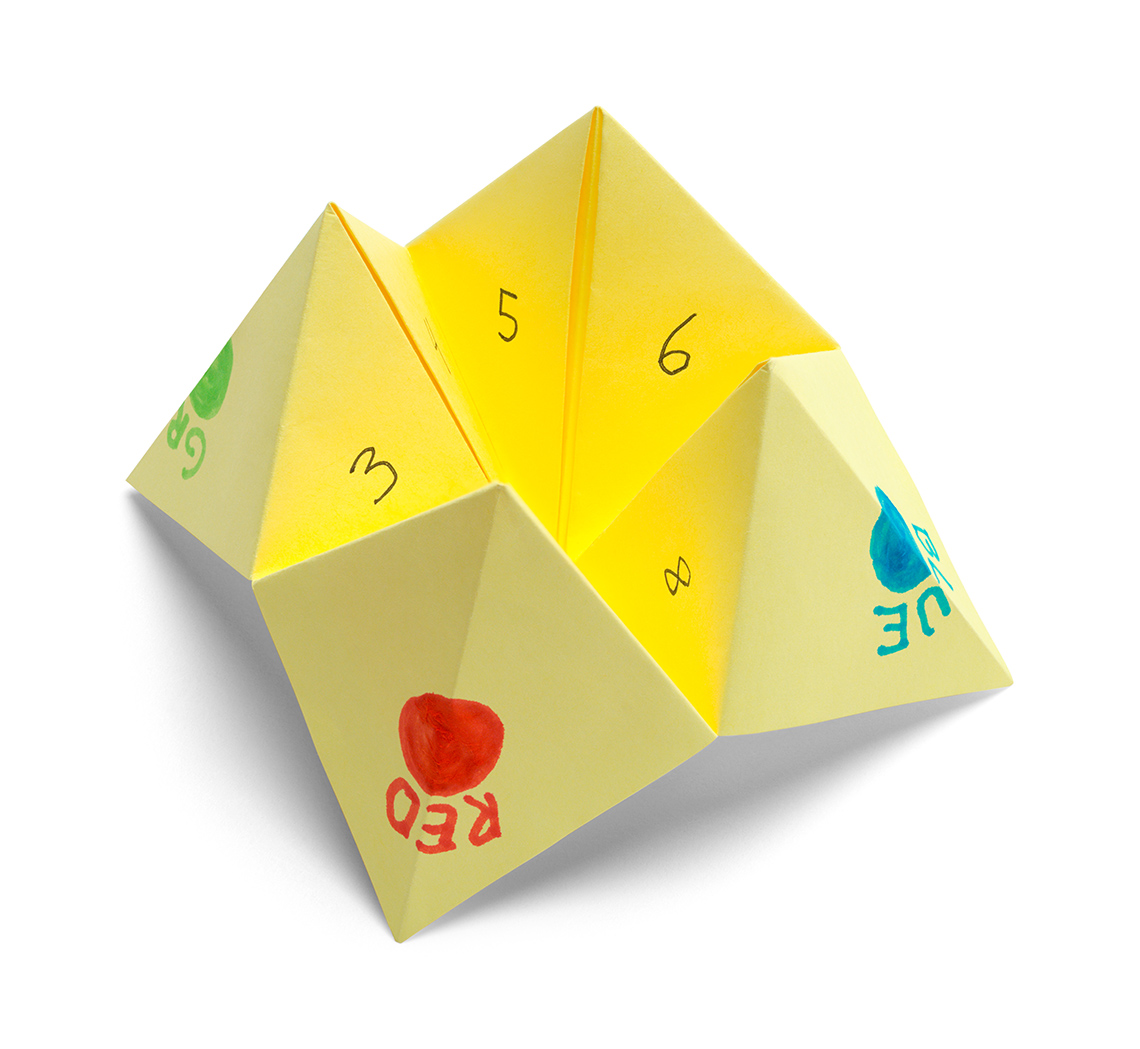
- a fitness movement
- a change in level, pathway, or speed
- the number of times to repeat the movement or the number of seconds to do the activity
Create your fitness moves

To decide which movements to put in your Fitness Fan, try choosing a sport, a skill to develop, or a body part to strengthen. Determine how many times you want the participant to do each activity. This could be the number of times they must repeat the movement or the number of seconds they must perform it.
Student Tips
Who’s playing?
Think about your participant and decide who will play your game.
For example, a younger person may find certain moves challenging, while someone who plays a sport with you may be familiar with certain sports-related actions. Your potential player can help guide your movements as you decide which ones to include in your fan.
Review the following organizer with examples of fitness movements for a Fitness Fan. These moves were designed to help someone strengthen their legs. When you are ready, use the Fitness Fan Organizer to create movements for your own fan.
| Fitness Fan Organizer | |||
|---|---|---|---|
| Number | Movement / Balance | Pathway, Level, Speed | Time |
| 1 | Hop | Crouch down and keep body low as you hop. | Repeat 15 times for each leg. |
| 2 | Squat | Squat quickly. Keep your squat shallow. | Repeat for 30 seconds. |
| 3 | Lunge | With each lunge, step forward on the diagonal. | Repeat 10 times for each leg. |
| 4 | Hamstring stretch | Slowly lean forward with hands reaching to feet. | Hold for 30 seconds. |
Complete the Fitness Fan Organizer in your notebook or using the following fillable and printable document. If you would like, you can use speech-to-text or audio recording tools to record your thoughts.
| Fitness Fan Organizer | |||
|---|---|---|---|
| Number | Movement / Balance | Pathway, Level, Speed | Time |
| 1 | |||
| 2 | |||
| 3 | |||
| 4 | |||
| 5 | |||
| 6 | |||
| 7 | |||
| 8 | |||
Press the ‘Activity’ button to access Fitness Fan Organizer.
Playing the game
Now that your Fitness Fan is complete, it’s time to play! If possible, ask a peer, sibling, or parent/guardian to participate. You may also try this activity on your own.
Follow these steps to play:
- Ask the player to pick a colour.
- Spell the colour out loud while you open and then pinch your fingers together.
- Once you’ve finished spelling the colour, open the Fitness Fan and ask the player to pick a number.
- Open and pinch your fingers together as you count to that number.
- When you are done counting, open the Fitness Fan and have them pick a number again.
- Open the flap for that number and read out the exercise. Ask the player to complete the exercise and then play the game again.
Let's Review
- Did the movements flow together to make a routine? Why or why not?
- Were the movements challenging or easy to do? Why?
- Is it more important to have moves that challenge you or are easier to complete? Why?
Reflection
As you read through these descriptions, which sentence best describes how you are feeling about your understanding of this learning activity? Press the button that is beside this sentence.
I feel…
Now, record your ideas using a voice recorder, speech-to-text, or writing tool.